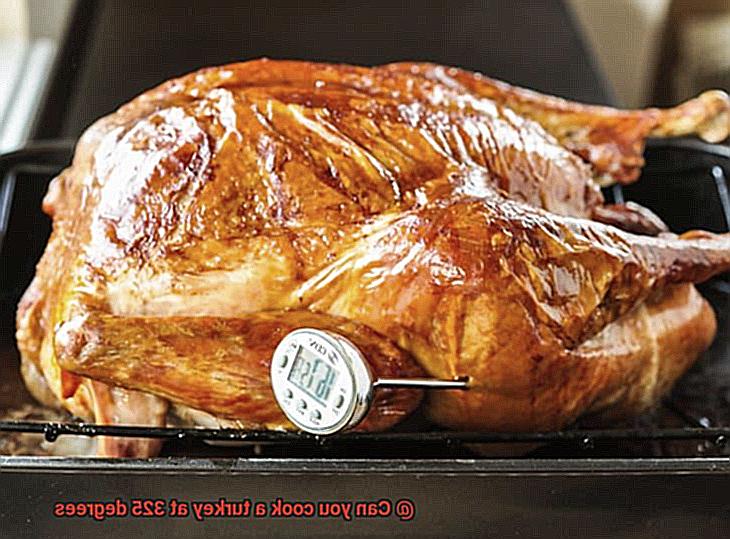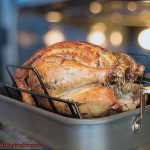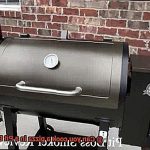Thanksgiving is almost here, and that means it’s time to start thinking about the centerpiece of your holiday meal: the turkey. But before you start prepping your bird for the oven, you need to know the right temperature to cook it. And one question that’s been on everyone’s mind is, “Can you cook a turkey at 325 degrees?”
It’s a valid concern because nobody wants an undercooked or overcooked turkey ruining their holiday feast. But fear not. Cooking a turkey at 325 degrees is not only possible but also one of the most recommended temperatures for cooking this beloved bird.
In this article, we’ll explore why 325 degrees is the optimal temperature for cooking your turkey. We’ll take a deep dive into the cooking process, how different parts of the bird are affected by the temperature, and how to avoid ending up with dry meat. Plus, we’ll share some insider tips on how to ensure that your turkey comes out perfectly cooked, juicy, and delicious.
So sit back, grab a cup of coffee (or maybe something stronger), and let’s get started on making sure that your Thanksgiving dinner is unforgettable – in all the right ways.
Contents
Benefits of Cooking a Turkey at 325 Degrees
Without hesitation, I always recommend cooking your turkey at 325 degrees Fahrenheit. This method is not only safe and effective but also has numerous benefits that will make your turkey the highlight of your holiday meal.
Firstly, cooking a turkey at 325 degrees Fahrenheit ensures moistness. The low temperature allows the turkey to cook slowly and retain its juices, resulting in tender and juicy meat. No one wants to bite into a dry and tough turkey, so this benefit is essential for a successful holiday meal.
Secondly, cooking your turkey at 325 degrees Fahrenheit is crucial for safety. The low temperature ensures that the internal temperature of the bird reaches a minimum of 165 degrees Fahrenheit, which is necessary to kill any harmful bacteria that might be present in raw poultry. This helps prevent foodborne illnesses like salmonella and ensures that everyone who indulges in your delicious turkey remains healthy and happy.
Thirdly, even cooking is another significant benefit of cooking your turkey at 325 degrees Fahrenheit. The low temperature allows for even heat distribution throughout the bird, ensuring that every part cooks evenly. This is especially important for larger turkeys, which can be challenging to cook evenly at higher temperatures.
Finally, cooking your turkey at 325 degrees Fahrenheit enhances the flavor development and gives the bird an aesthetically pleasing golden brown color. The slow cooking process allows the flavors to develop properly, imparting a delicious taste and aroma that will have everyone’s mouth watering. Plus, the golden brown color adds to the visual appeal of your holiday centerpiece.
In summary, cooking a turkey at 325 degrees Fahrenheit is a tried-and-true method that offers many benefits for a successful holiday meal. Here’s a list of benefits you’ll enjoy when you choose this method for your holiday bird:
- Moistness: The low temperature ensures that the turkey stays moist and juicy.
- Safety: The low temperature helps prevent foodborne illnesses like salmonella.
- Even cooking: The low temperature allows for even heat distribution throughout the bird.
- Flavor development: The slow cooking process allows the flavors to develop properly, imparting a delicious taste and aroma.
Preparing the Turkey for Cooking
To start, ensure that your turkey is completely thawed before cooking. A frozen turkey will result in uneven cooking and could lead to undercooked or overcooked meat. Once thawed, remove it from its packaging and give it a good rinse inside and out with cold water. Use paper towels to pat it dry.
Now, get creative with your seasoning. Don’t be afraid to experiment with different herbs and spices to create a delicious flavor profile. Some popular options include salt, pepper, garlic powder, onion powder, thyme, and rosemary. Rub your seasoning of choice all over the turkey for maximum flavor impact.
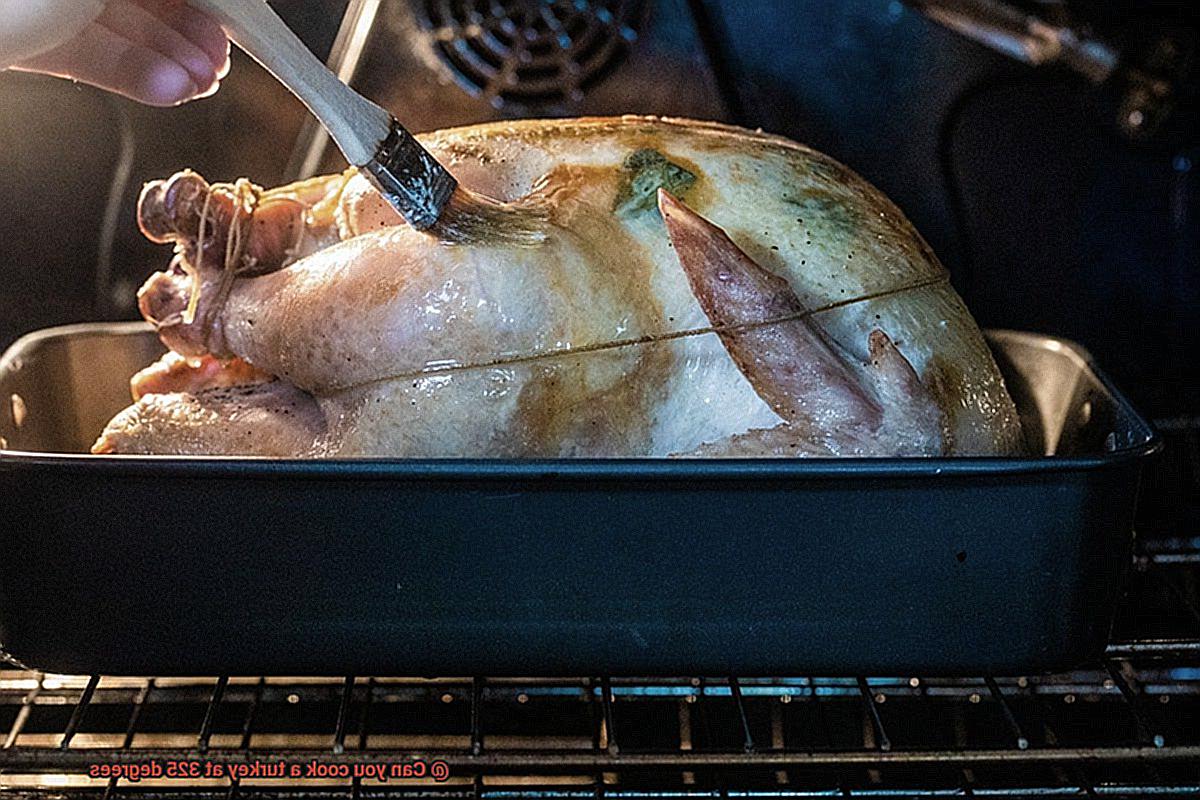
For even cooking, truss the turkey by tying the legs together and tucking the wings under the body. This step will prevent certain areas of the bird from overcooking.
Place your seasoned and trussed turkey on a roasting rack in a roasting pan, cover it with foil, and preheat your oven to 325 degrees Fahrenheit. The general rule of thumb for cooking a turkey is to allow 15-20 minutes of cooking time per pound of meat. Adjust your cooking time accordingly based on the weight of your bird.
But wait, we’re not done yet. To ensure that your turkey is cooked to perfection, use a meat thermometer to check that the internal temperature has reached 165 degrees Fahrenheit. Let it rest for 15-20 minutes before carving to allow the juices to redistribute throughout the meat.
Roasting Pan and Rack Requirements
Let’s start with the roasting pan. Size matters here – it should be big enough to comfortably fit your turkey but not so large that it won’t fit in your oven. A good rule of thumb is to choose a pan with high sides of at least 2 inches, which will prevent any drippings from spilling over and making a mess.
Now, let’s talk about the rack. This is where the magic happens. By elevating the turkey off the bottom of the pan, it allows hot air to circulate around it, resulting in even cooking. Plus, any excess fat will drip off the bird, leading to a crispy skin and a healthier meal.
When it comes to selecting a roasting pan and rack, there are several options available. Stainless steel and aluminum are popular choices as they are lightweight, easy to clean, and affordable. If you’re looking for something more heavy-duty and durable, enamel-coated cast iron is a great option as it retains heat better.
Size also plays a role in selecting the right pan. You want to make sure that your turkey isn’t overcrowded in the pan, which can lead to uneven cooking. Aim for a pan that is at least two inches larger than your turkey in all directions.
Basting Tips for Moisture and Flavor
Cooking a turkey can be a daunting task, especially if you want to make sure it stays moist and flavorful. One technique that can help is basting, which involves brushing or spooning liquid over the turkey every 30 minutes or so while it cooks. Here are five tips to help you get the most out of your basting efforts:
The Right Basting Tool
A crucial element of successful basting is using a tool that can reach all areas of the turkey, including the wings and legs. A long-handled basting brush or a bulb baster works well for this purpose.
Oven Door Control
Opening the oven door too often while basting can cause fluctuations in temperature and affect the cooking time. It’s important to quickly brush or spoon the liquid over the turkey and close the oven door again.
Choice of Basting Liquid
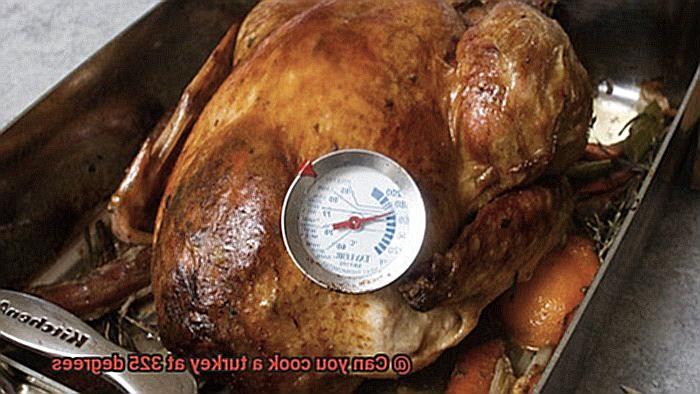
Choosing your basting liquid carefully can add a depth of flavor to your bird. Melted butter is a popular choice as it adds flavor and helps to crisp up the skin. Broth or stock can also be used, which adds moisture and flavor to the meat. Some people also like to add herbs or spices to their basting liquid for added flavor.
Basting Does Not Guarantee Juicy Turkey

It’s important to remember that basting does not guarantee a perfectly juicy turkey. Cooking the turkey at the correct temperature and for the correct amount of time is also crucial for achieving a moist and flavorful bird.
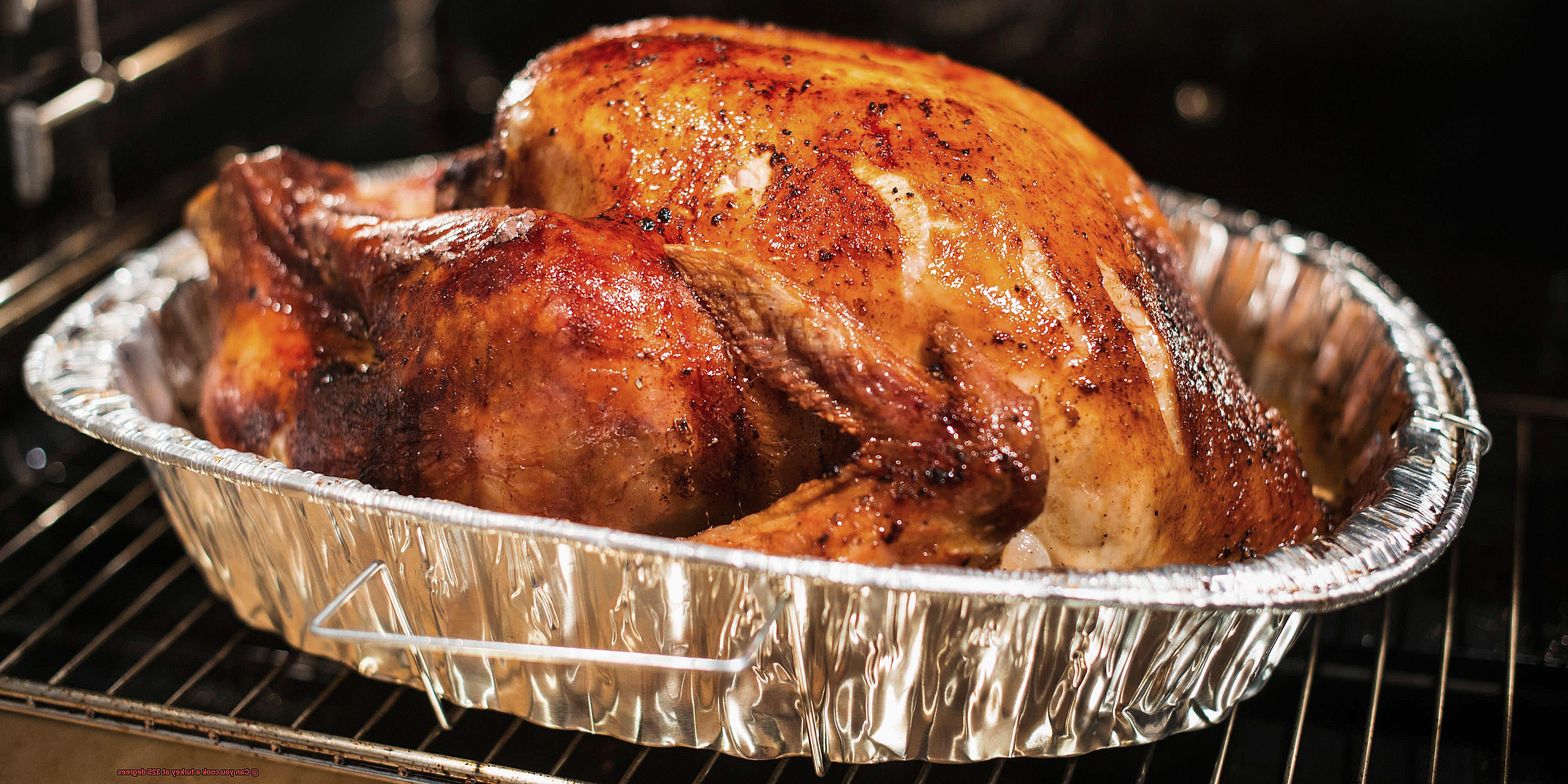
Other Techniques for Extra Moistness
Consider using other techniques in addition to basting to keep your turkey moist and flavorful. For instance, covering the turkey with foil for part of the cooking time can help trap in moisture, while letting the turkey rest for 15-20 minutes after removing it from the oven can also help redistribute juices throughout the meat.
Cooking Times for Unstuffed vs Stuffed Turkeys
Cooking a turkey can be an exciting and nerve-wracking experience, especially if you’re preparing for a special occasion like Thanksgiving. The temperature at which you cook your turkey is a crucial factor in determining how juicy and flavorful it will be. At 325 degrees Fahrenheit, cooking times for unstuffed vs. stuffed turkeys can vary significantly, so it’s important to understand the differences.
If you’re cooking an unstuffed turkey, experts recommend roasting the bird for about 15-20 minutes per pound at 325 degrees Fahrenheit. This means that a 10-pound turkey would take between 2.5-3.5 hours to cook. To ensure that the internal temperature of the turkey has reached a safe temperature of 165 degrees Fahrenheit, it is essential to use a meat thermometer.
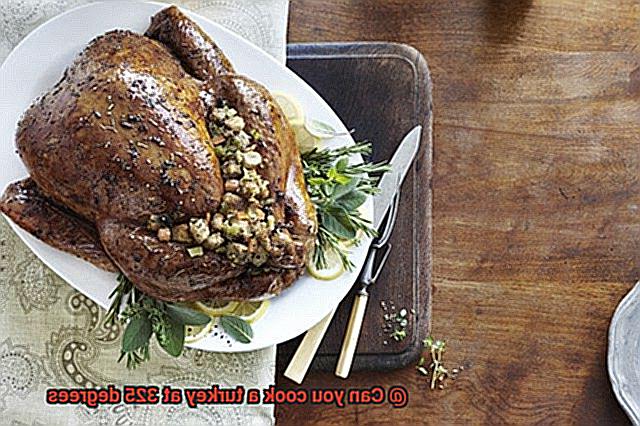
However, if you prefer a stuffed turkey, it’s important to adjust your cooking time accordingly. Stuffing can act as an insulator, slowing down the cooking process and increasing the risk of foodborne illness. Experts suggest cooking a stuffed turkey for approximately 20-25 minutes per pound at 325 degrees Fahrenheit. This means that a 10-pound stuffed turkey would take between 3.5-4.5 hours to cook.
It’s worth noting that if you’re using a roasting pan with a lid, removing the lid during the last hour of cooking can help the skin of the turkey turn golden brown and crispy. If you’re using a convection oven, you may be able to reduce your cooking time by approximately 25% due to increased air circulation.
Using a Meat Thermometer to Check Internal Temperature
The turkey can be daunting, but fear not. The secret to a juicy and flavorful bird lies in the temperature, and a meat thermometer is your ally in achieving that perfect result.
First, preheat your oven to 325 degrees Fahrenheit. Once your turkey is in the oven, grab your trusty meat thermometer. But where to insert it? The thickest part of the turkey is the best place, while avoiding any bones that can give a false reading.
Here’s where the pros shine: check the temperature in multiple areas of the turkey. This ensures even and thorough cooking. Remember that the recommended internal temperature for a cooked turkey is 165 degrees Fahrenheit, so keep that number in mind as you’re checking different areas.
When you insert the thermometer, make sure to leave it in for at least 15 seconds to get an accurate reading. And if you do not have a meat thermometer, it’s recommended to purchase one before cooking your turkey. Not only are they relatively inexpensive, but they can also save you from undercooking or overcooking your bird.
So, why is using a meat thermometer so important? Cooking a turkey at 325 degrees Fahrenheit is a popular method, but it’s crucial to ensure that the internal temperature of the turkey reaches the recommended safe temperature. By checking the temperature with a meat thermometer, you can avoid any potential foodborne illnesses caused by undercooked poultry.
Tips for Perfectly Cooked Turkey Every Time
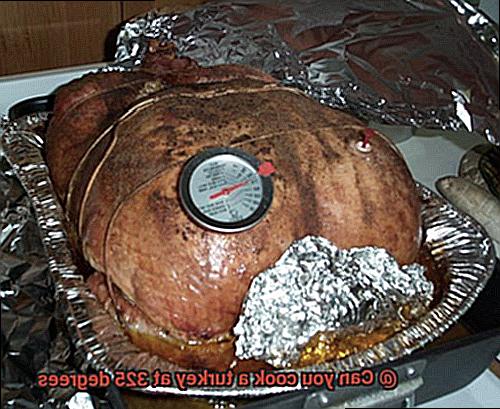
The key to a delicious Thanksgiving feast is a perfectly cooked turkey. Cooking a turkey at 325 degrees Fahrenheit is a good starting point for ensuring that you end up with a moist and tasty bird. However, there are some tips and tricks to keep in mind to achieve the perfect level of doneness without drying it out. Here are five sub-sections to help you master cooking the perfect turkey every time:
Use a Meat Thermometer
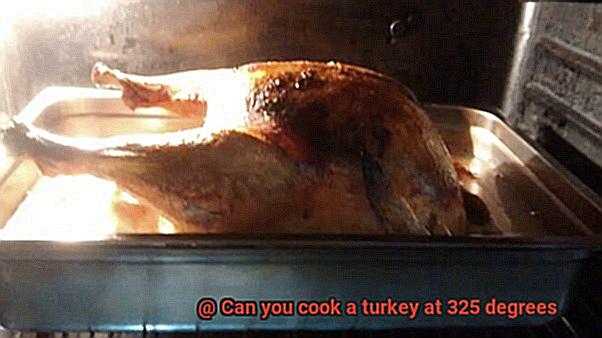
A meat thermometer is an indispensable tool for ensuring that your turkey is cooked to perfection. It’s crucial to insert the thermometer into the thickest part of the breast and thigh meat, making sure not to touch the bone. Once the breast reaches 165 degrees and the thigh reaches 175 degrees, your turkey is ready to be served.
Go Low and Slow
Cooking your turkey at 325 degrees Fahrenheit allows it to cook evenly without drying out. Avoid cooking at higher temperatures as this can cause the outside of the turkey to burn while leaving the inside raw. Slower cooking also allows the flavors to develop fully, resulting in a more delicious turkey.
Baste Regularly
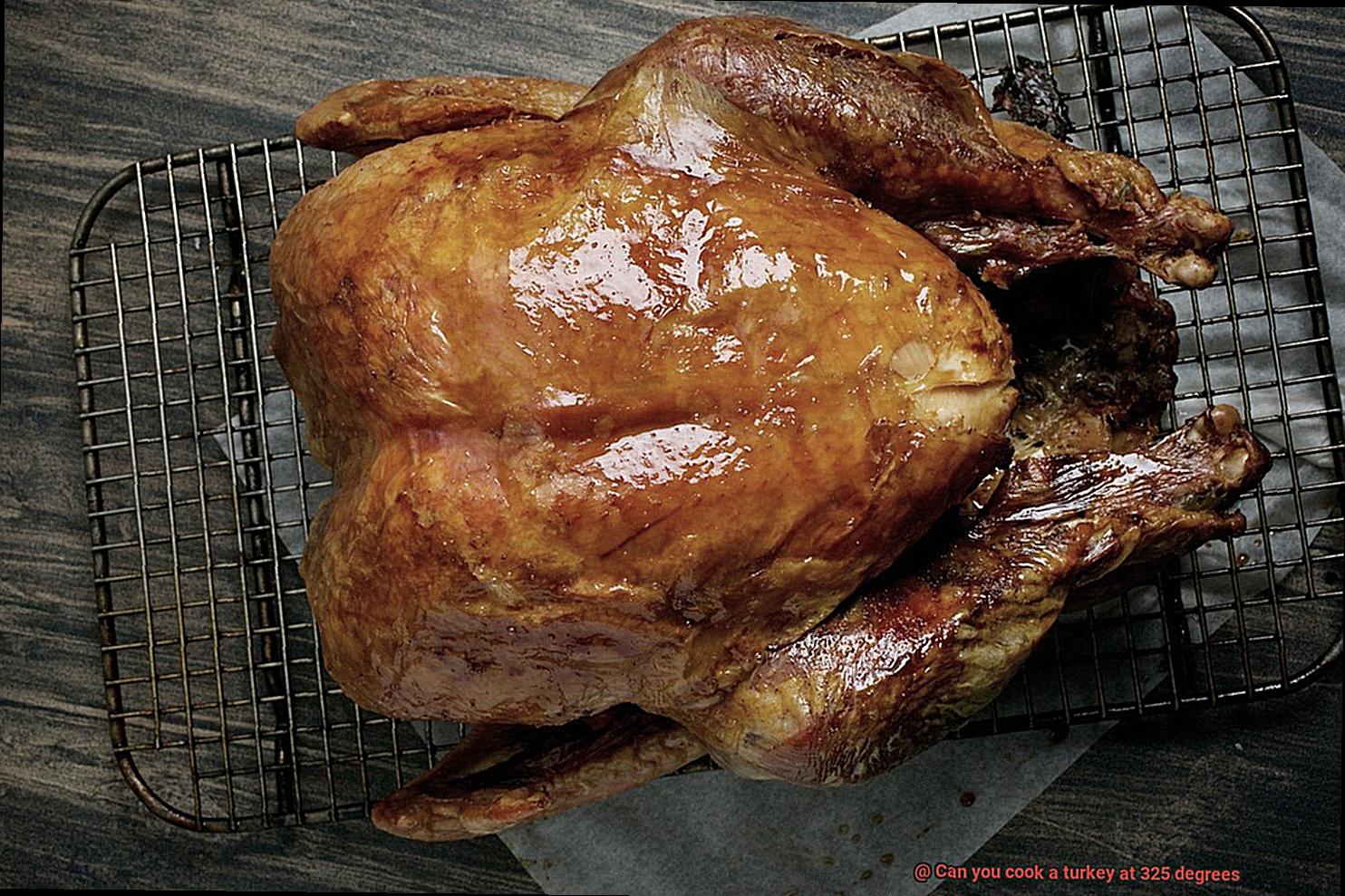
To keep your turkey moist and flavorful, baste it with its own juices or melted butter every 30 minutes or so. Basting also promotes even browning, resulting in an attractive golden-brown skin.
Let It Rest
After your turkey has reached the proper temperature, allow it to rest for at least 15-20 minutes before carving. Resting allows the juices to redistribute throughout the meat, resulting in a juicier and more tender bird.
Consider Brining
Brining your turkey before cooking can help ensure that it stays moist and flavorful. A simple brine solution can be made by combining water, salt, sugar, and any desired herbs or spices. The turkey should be soaked in the brine solution for several hours before cooking.
Common Mistakes to Avoid When Cooking a Turkey at 325 Degrees
Cooking a turkey at 325 degrees can be a breeze – as long as you avoid these common mistakes. First and foremost, don’t underestimate the cooking time. Calculate it based on the weight of your bird and any additional ingredients. This will prevent the dreaded overcooked or undercooked turkey, and ensure that every slice is juicy and delicious.
Next, don’t skimp on seasoning. Many people only season the outside of the turkey, but you should also add flavor to the inside cavity and under the skin for maximum taste sensation. The right balance of herbs and spices will elevate your turkey to a whole new level.
Another mistake to avoid is overcrowding your oven. Make sure there’s enough space for air to circulate around the turkey, which ensures even cooking. If you’re cooking other dishes at the same time, adjust the temperature or cooking time to avoid a crowded oven.
Lastly, use a meat thermometer. This is an essential tool that will help you determine when your turkey is fully cooked and safe to eat. The internal temperature should reach 165 degrees Fahrenheit in both the thickest part of the breast and innermost part of the thigh. Without a thermometer, you run the risk of overcooking or undercooking your turkey.
UG2Ed2x5fgk” >
Conclusion
In conclusion, cooking a turkey at 325 degrees Fahrenheit is not only possible but also highly recommended.
This temperature provides numerous benefits such as juicy meat, even cooking, and enhanced flavor. To achieve the perfect turkey, it’s crucial to prepare it properly by seasoning it creatively and trussing it for even cooking.
Using a roasting pan with a rack allows for optimal airflow and basting can help keep the bird moist and delicious. However, there are common mistakes to avoid such as underestimating the cooking time or overcrowding the oven.
By utilizing a meat thermometer to ensure an internal temperature of 165 degrees Fahrenheit and following these tips, your Thanksgiving dinner will be one for the books.

